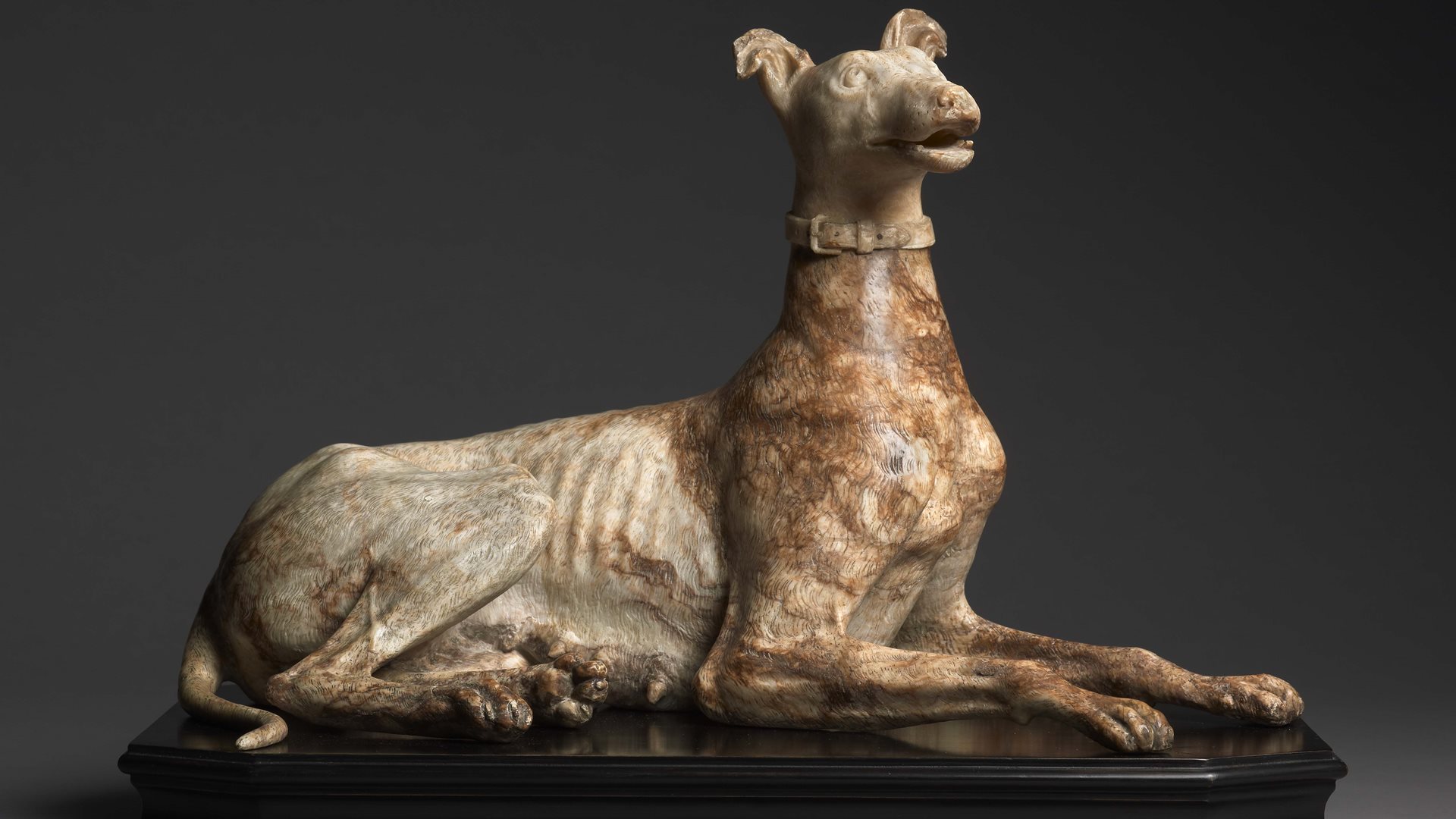

The recumbent dog is depicted with an alert cocked head and wearing a leather collar. Its carved pupils add to the impression of liveliness and its fur was carefully chiselled to render its texture.
A tradition of alabaster carving of international stature had been well established in England since the Middle Ages, thanks to large quarries in Nottinghamshire and Derbyshire and ecclesiastic and courtly patronage. Animals could feature on funerary monuments but also in secular context and the present sculpture, with its undeniable presence and liveliness, would appear to be the portrait of a particular dog. A parallel can be drawn with another work, this time in wood, also representing a beloved animal and commissioned by its owner. Sculpted in the 17th century by Artus Quellinus, the dog’s whose collar feature the coat of arms of the Roose family of Antwerp; formerly with Daniel Katz Ltd, the work is now in the collection of the Rijksmuseum.
A thorough analysis conducted on the present sculpture by the BRGM Laboratories confirmed its English provenance and indicated that it “can be linked without ambiguity to the English alabaster deposits in the wider vicinity of Nottingham (Nottinghamshire, Derbyshire and Staffordshire). The isotope fingerprints are compatible with those of the alabaster from the Staffordshire quarries near Fauld, probably exploited since the 12th century and reputed as important alabaster source in the 17th century.”
The present greyhound compares with a group of four swans also in alabaster sculpted by Nicholas Stone on the late 1630s and that were probably part of a grotto decoration at Wilton House. The leading stone and marble carver in England at the time, Stone produced a wide range of his sculpture, in particular statuary for gardens and for the exteriors of buildings, chimney-pieces and in marble and alabaster.
A tradition of alabaster carving of international stature had been well established in England since the Middle Ages, thanks to large quarries in Nottinghamshire and Derbyshire and ecclesiastic and courtly patronage. Animals could feature on funerary monuments but also in secular context and the present sculpture, with its undeniable presence and liveliness, would appear to be the portrait of a particular dog. A parallel can be drawn with another work, this time in wood, also representing a beloved animal and commissioned by its owner. Sculpted in the 17th century by Artus Quellinus, the dog’s whose collar feature the coat of arms of the Roose family of Antwerp; formerly with Daniel Katz Ltd, the work is now in the collection of the Rijksmuseum.
A thorough analysis conducted on the present sculpture by the BRGM Laboratories confirmed its English provenance and indicated that it “can be linked without ambiguity to the English alabaster deposits in the wider vicinity of Nottingham (Nottinghamshire, Derbyshire and Staffordshire). The isotope fingerprints are compatible with those of the alabaster from the Staffordshire quarries near Fauld, probably exploited since the 12th century and reputed as important alabaster source in the 17th century.”
The present greyhound compares with a group of four swans also in alabaster sculpted by Nicholas Stone on the late 1630s and that were probably part of a grotto decoration at Wilton House. The leading stone and marble carver in England at the time, Stone produced a wide range of his sculpture, in particular statuary for gardens and for the exteriors of buildings, chimney-pieces and in marble and alabaster.